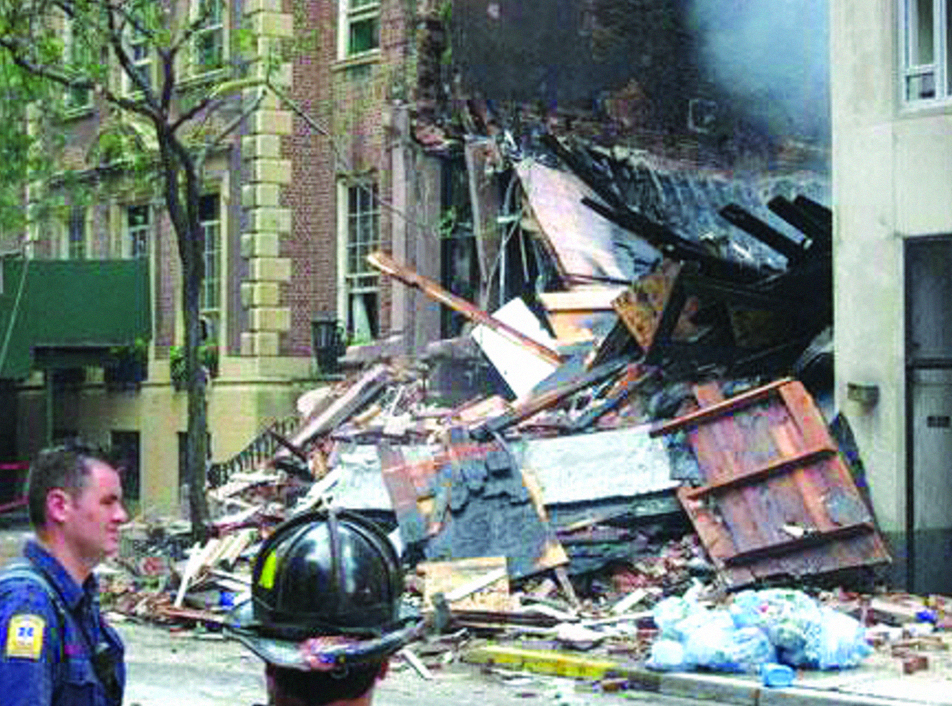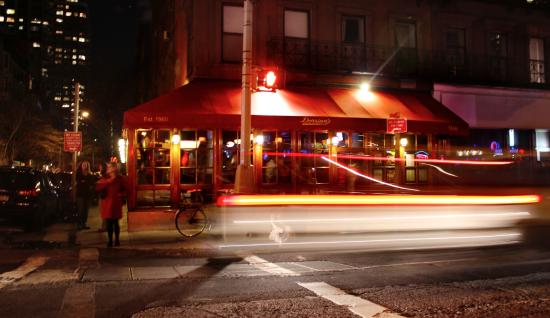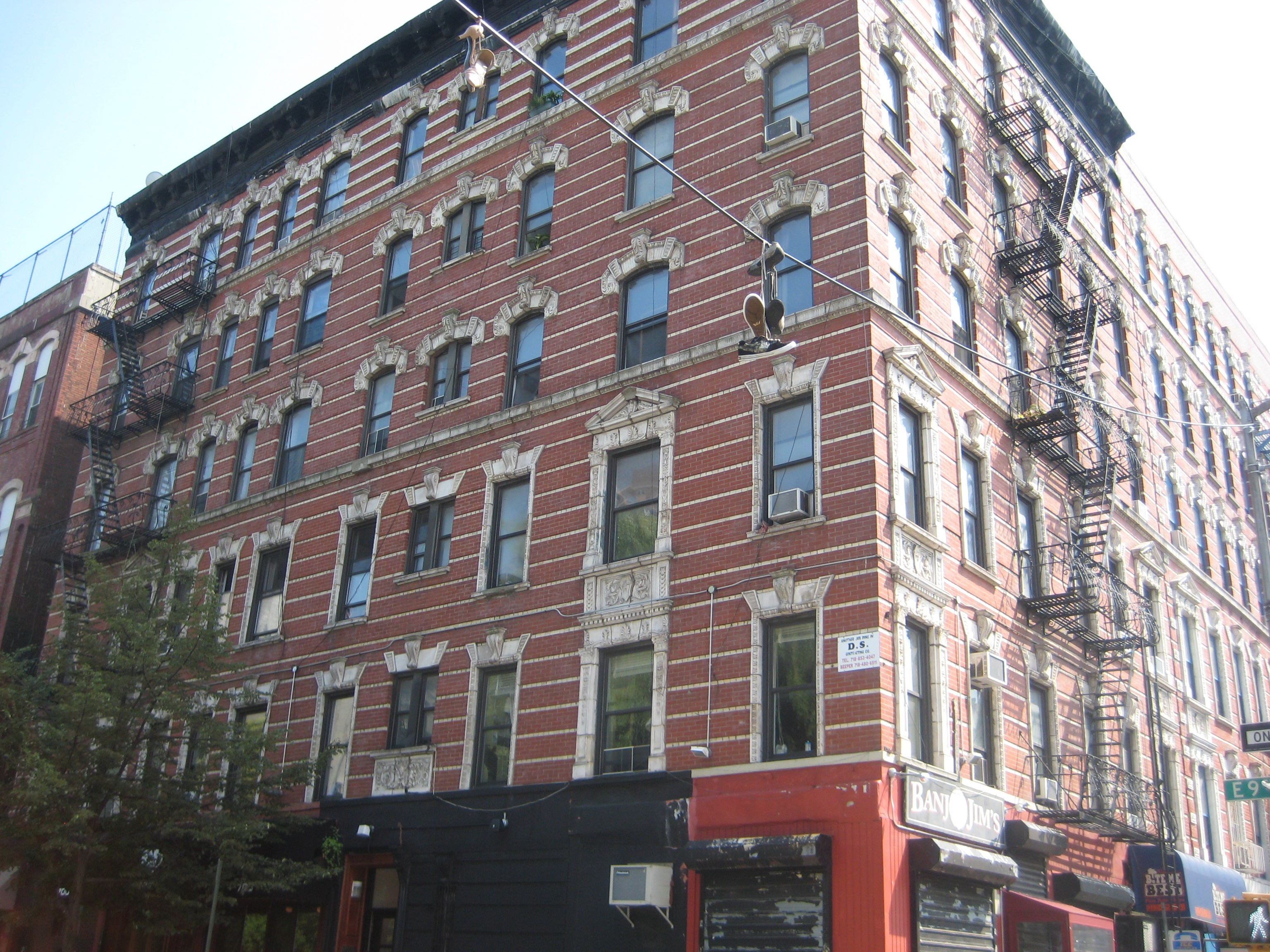ALISSA BENNETT
20 East 65th Street, July 5, 1998
“The more arduous and the more complicated it got, the more desperate we became, and the more morbid-minded we became. We wanted to kill her.”
— Kenneth Kimes
When Irene Silverman rented the ground floor apartment of her 65th Street townhouse to a man purporting to be Palm Beach businessman Manny Guerrin, she had owned and lived the building for nearly 50 years. Although she was initially hesitant to accept the stranger as a tenant without a thorough check of references, Silverman acquiesced when Guerrin was able to immediately produce the first month’s rent ($6,000) in cash. Silverman would become increasingly suspicious over the next four weeks; her boarder would not allow cleaning staff access to his rooms, he was evasive, his footprints were repeatedly found outside of her office doors and bedroom, household staff had caught him spying on Silverman’s private phone calls, an unusual middle-aged woman regularly visited him wearing a variety of bizarre disguises. Silverman disappeared on July 5, 1998, the day before mother and son duo Sante and Kenneth Kimes were caught with a bag that contained falsified identification cards for Manny Guerrin, Silverman’s house keys, passport, checkbook and pay stubs, a red wig, power of attorney forms and a notarized deed with Silverman’s forged signature transferring ownership of the property to the Kimeses. Though Silverman’s body has never been found, in 2000 the Kimeses were found guilty of her murder as well as those of David Kazdin and Sayed Bilal Ahmed.

34 East 62nd Street, July 10, 2006
“You deserve it. You will be transformed from gold digger to rubbish digger. You always wanted me to sell the house. I always told you ‘I will leave the house only if I am dead.’ You ridiculed me. You should have taken it seriously.”
— Nicolas Bartha in an emailed suicide letter to his ex-wife
The building at 34 East 62nd Street had a storied history; it had been one of the first townhouses constructed on the Upper East Side in 1862, a Neo-Grecian jewel box that had been used as a war room for FDR in the 1940s. Nicholas and Cordula Bartha had purchased the house in 1980 after decades of scrimping and saving, but from the outset, life inside was far from ideal. Nicholas was cruel and controlling, a workaholic who frequently referred to his wife and daughters as whores, decorated the inside of the home with images of swastikas and hoarded newspaper clippings about pedophilia and abortion. When Cordula finally filed for divorce in 2001, the house became the object of a vitriolic and protracted legal battle that would rage for nearly five years. In 2006, a judge initiated the eviction of Bartha and ruled that the property be sold with all subsequent proceeds split evenly between both parties. Bartha had made repeated reference to the fact that he would vacate the home only in the event of his death, and on July 10, 2006, he opened the gas throughout the house, lit a match, and razed the property to the ground with himself inside. Though Bartha survived the initial blast, he died six days later of his injuries.

Dorrian’s Red Hand, 300 East 84th Street, August 26, 1986
“Use these with someone else, because you’re not going to get the chance to use them with me!”
— Robert Chamber’s unidentified 16 year old girlfriend upon throwing a bag of unused condoms at him on the night of Jennifer Levin’s murder.
Robert Chambers was 19 years old in the summer of 1986. Addicted to both cocaine and alcohol, the former alter boy had fallen far from the life that his working-class mother had tried to construct for him. He had never been able to align himself with the privilege that surrounded his classmates at the various prep schools that he attended via scholarship at her behest, and he had been failing in more and more profound ways. He’d been arrested for stealing, he’d been sent to rehab, he’d been thrown out of Boston University and fired from his job. On August 26th at Dorrian’s Red Hand, Jennifer Levin watched as Chambers’ underage girlfriend broke up with him at the bar. Levin and he had been intimate before, and she immediately took the opportunity to tell him that it had been the best sex of her life. They sat and drank until 4:30 the next morning, eventually leaving together and making their way to Central Park via the 86th Street entrance adjacent to the Met. Several joggers had seen the couple having sex in the grass- one remembered hearing a woman yelping in pain and had stopped, some distance away, and asked if everything was alright. “We’re fine,” Chambers yelled to him. At 6:15 am, Levin’s body was found. She’d been strangled and was lying naked in the grass; Chambers was observed standing at the stone wall by the museum watching the police attend to her body. Though he would subsequently claim that the scratches evident on his face and body had come from a cat, he would eventually make a partial confession, claiming that the two had been engaged in rough sex gone terribly awry.

424 Hudson Street, September 28th, 2006
“It looked like he had a bad night, I can tell you that.”
— Passerby Ralph Costanza
It was close enough to Halloween that witnesses had walked past the body attached to a wrought iron fence outside of 424 Hudson Street for several hours before anyone thought that something might be amiss. Dressed in chaps, a leather vest, spiked leather gloves and a hood, the figure appeared to be an early decoration, a life-sized spooky prop attached to the fence by a dog collar at the neck. Was it murder? Was it an accident? I’m not sure- the news stories dried up relatively quickly. I have never even been able to learn his name.

700 Avenue C, August 19, 1989
“Is it soup yet?”
— Phrase scrawled on the apartment door of Daniel Rakowitz, The Butcher of Tompkins Square
In 1989, drastic cuts to social welfare programs in New York triggered an economic crisis that left a huge swath of the low-income population on the brink of total disaster. With unemployment skyrocketing and a conscious lack of state intervention, the city had an estimated 80,000 residents that were without both homes and recourse. Daniel Rakowitz was small time drug dealer and self-proclaimed devil worshipper who had become a well-known figure to many people in Tompkins Square’s Tent City, an improvised community of homeless New Yorkers who took up residence in the park. In August of 1989, Rakowitz began bragging to Tent City inhabitants that he had murdered and cannibalized his roommate, Monica Beele, a 26 year old Swiss woman who had been a student at the Martha Graham School of Dance and a performer at Billy’s Topless on 24th Street and 7th Avenue. Though his claims were initially dismissed as fantasy, a tip-off eventually led police to a locker at Port Authority Terminal, where Beele’s bleached skull was recovered. Several witnesses would subsequently claim that Rakowitz had served soup in the park, playfully claiming that it contained Beele’s brain.

—
Crime enthusiast and writer Alissa Bennett was born in Providence, Rhode Island in 1980. She is the author of DEAD IS BETTER, a twice-yearly zine dedicated to celebrity death, criminal behavior, and the American television program Intervention. Bennett lives and works in Brooklyn.
